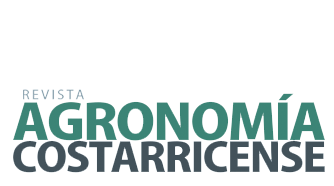Conservation of Hemileia vastatrix Berkeley & Broome with the addition of dispersants under cold conditions
DOI:
https://doi.org/10.15517/3g9m3m24Keywords:
Coffea arabica L., uredospores, germination, coffee rustAbstract
Introduction. Hemileia vastatrix, the causal agent of coffee rust, is an obligatory parasite. Preservation in the laboratory under cold conditions (ranges of 2-8 °C) can reduce the germination and viability of uredospores for extended periods, which is a limiting factor when conducting in vitro research. Objective. To determine the viable storage time of uredospores under cold conditions by evaluating the germination percentage, using two dispersants for artificial germination in a culture medium. Materials and methods. Four periods, 22 days apart, were evaluated for each treatment. Rust inoculum was preserved at temperatures of 4 °C and -30 °C, as these are commonly used temperatures for storing phytopathogens in different laboratories. Uredospores were dispersed in vitro on Petri dishes with agar-water culture medium, using deionized water and Tween 20 as dispersants. The plates were incubated for 12 hours at 21 °C, and the number of viable uredospores was counted. Results. A germination percentage of 58.0% with Tween 20 and 36.2% with deionized water was obtained on the 0 days after storage (DAS). After the four evaluations, it was determined that the storage temperature at 4 °C maintained constant germination up to 88 DAS, while the inoculum preserved at -30 °C significantly reduced uredospore germination from 44 DAS onward. The use of Tween 20 dispersant maintained a higher germination percentage at the 22, 44 and 88 DAS periods compared to the deionized water treatment. Conclusion. Tween 20 generates greater dispersion of the uredospores, which inhibits germination. The thermal shock to the uredospores when transitioning from warm ambient temperatures to preservation at -30 °C reduces in vitro germination.
Downloads
Downloads
Published
Issue
Section
License
Copyright (c) 2025 Agronomía Costarricense

This work is licensed under a Creative Commons Attribution-NonCommercial-NoDerivatives 4.0 International License.
The author (s) must authorize Revista Agronomia Costarricense Journal the right of its publication which will be registered with the Creative Commons Attribution-NonCommercial-NoDerivs 4.0 license. Author (s) may include their publication in an institutional repository clarifying that the publication was done in the Agronomía Costarricense Journal.
Once the volume of the respective period has been published, the digital version can be accessed, which allows managing a self-archive of the document or documents of interest, in the site selected by the author.
Otherwise, the main author must attest in writing, that the presented information is original and unpublished by any other media. Also, must have the authorization of the institution where the investigation was conducted.




